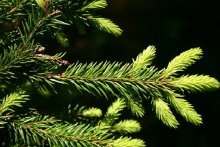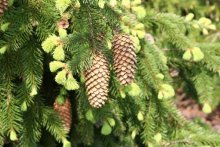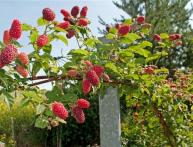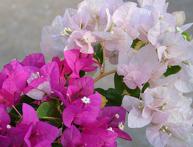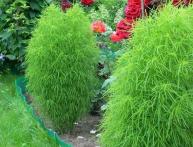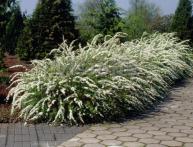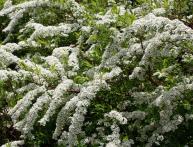Green, gray, blue, gold: it’s all about spruce
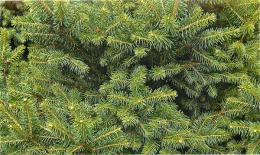
Spruce is a typical representative of coniferous evergreens. Like all conifers, with the exception of larches that shed their needles, it remains in the same plumage all year round. Thanks to this property, coniferous plants make garden and park areas green both in summer and winter.
Content:
Botanical description
In total, there are more than 35 species of spruce in the world. In Russia, the most common are the following:
- European (Regular)
- Ayanskaya
- Korean
- Eastern
- Small-seeded
- Glena
- Siberian
- Tan - Shan
- Barbed
Despite the difference in needle color, size, and crown shape, they all belong to the Spruce genus and have much in common in their structure.
Biologically, the genus Spruce belongs to the Pine family, from the group of gymnosperms.
The usual leaves were transformed into a special form - needles. It is usually flat or tetrahedral, rigid, pointed at the end. Needles various types May vary in size and color. Many representatives have green, dark green, gray, and bluish needles. On the branches the needles are located singly. The needles live up to 5-6 years; every year the tree sheds some of its old needles.
Most often, the branches of Christmas trees form a crown in the form of a cone. They are located parallel to the ground, or slightly drooping. In natural habitats, trees reach heights from 30 m to 80 m. The tallest spruce trees are oriental and Tien Shan.
In the first years of life, the root system of Christmas trees develops as a taproot, and after the main root dies, surface branches remain. This explains the poor wind resistance of trees.
Since spruce trees are gymnosperms, their reproductive organs are female and male strobili (cones). Female cones are large, located at the ends of the branches. After pollination they increase in size. Male cones resemble earrings in appearance; pollen ripens in May and is carried by the wind.
After the seeds ripen, the cones fall off intact. Seeds - scales have two ovules and a “false” wing, thanks to which they are easily carried by the wind over long distances. Germination can remain for more than five to six years. Spruce trees enter the breeding season quite late, at 15 - 20 years. They are long-lived, living up to 300 years.
In the European part, spruce forests are formed, as a rule, by the common spruce (European). At least 10 other varieties can be found in Siberia and the Far East. Spruce forests are of great economic importance in the timber and wood processing industries.
Spruce in the national economy
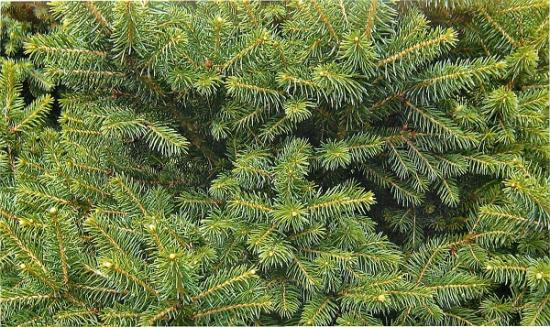
Spruce is harvested as a source of fairly high-quality wood. Although it is inferior in strength to cedar and larch, it is still used in construction and pulp and paper production. Spruce wood is characterized by one feature - musical instruments made from it have an unsurpassed sound. The old masters made their best violins from spruce planks.
Also, when processing wood, it is worth mentioning the production of such products as:
- tar
- turpentine
- rosin
- methyl alcohol
Thanks to these resin-based products, as well as beneficial properties pine needles, spruce are widely used in official and folk medicine.
The pharmacological industry produces the well-known drug "Pinobil", obtained from the products of processing spruce needles. It is used internally for a variety of inflammatory and infectious diseases of the urinary tract, and for the formation of stones in the kidneys and bladder.
Turpentine and tar are included in many ointments, and turpentine is also processed into camphor.
Spruce needles and buds are rich in nutrients and vitamins. Decoctions of them are widely used in folk medicine as:
- restorative
- antimicrobial
- vitamin
- sedatives
- products that are used internally, externally, for inhalation, medicinal baths
Spruce seeds serve as food for forest birds and animals. Spruce trees are planted in windbreaks along highways and agricultural fields. In many countries with cold winters, the spruce tree is a symbol of Christmas and New Year. Christmas trees and bouquets of spruce paws decorate houses and squares during the New Year holidays.
Due to the preservation of its green color at any time of the year, spruce is widely used in landscaping settlements, landscape and landscape design.
Spruce as an ornamental plant
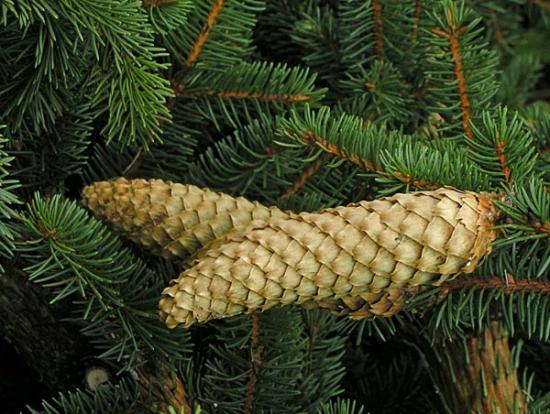
Many natural and decorative forms Christmas trees are used to create gardens and parks. The plant is suitable for:
- hedges
- design of paths
- alley devices
- single landings
- design of reservoirs
- mixed groups
- alpine slides
Representatives of the Prickly Spruce with blue needles are the most sought after coniferous plants. They were brought to European gardens from North America. It is customary to plant decorative representatives of this species in gardens.
There are very miniature, slightly more than a meter high, compact blue Christmas trees "Clauca Clombosa". As a rule, these dwarf trees are placed in rock gardens or group plantings with other conifers. Can be planted next to early flowering shrubs (forsythia, sakura, spirea, viburnum, fieldfare), variegated hostas, and ornamental cereals.
Large, up to 15 m, pyramidal "Koster" are good both for single plants and for group mixed plantings next to the birches, mountain ash, hawthorn. Representatives of “Erich Fram” and “Hopsi” are suitable for hedges and alleys, with gray-blue colored needles and small sizes up to 3-5 meters. However, there is one drawback - expensive planting material. It is not for nothing that blue spruce is a sign of prosperity and material well-being.
As a result of long-term work, breeders have obtained a wide variety of forms of Norway spruce. There are both dwarf, groundcover trees, and medium-sized and tall plants with fancy crowns. Low-growing, with bluish needles, "Pumila Glauca" does not exceed one meter in height, and its crown has a circumference of up to 5 meters. Slender, with a narrow, cone-shaped crown, "Piramidata" looks like tall columns.
The variety of forms is complemented by plants with yellow, golden needles, purple cones, multi-stemmed, with spherical and flat crowns.
Norway spruce tolerates pruning well. And although this requires special skills, it is not difficult to master. After all, then the evergreen hedge will be of the required size and neat appearance.
Planting and care
Selection of seedlings
It is better to choose seedlings in trusted specialized nurseries, since by purchasing planting material from random sellers, you can get not a dwarf, slow-growing Christmas tree, but a huge, spreading giant, which in a few years you will have to part with, since it will take up half of the garden and within a radius of five to six meters, nothing will grow, because in natural spruce forests there is almost no undergrowth.
It is best to give preference seedling in a container or with a closed root system, since the roots of Christmas trees do not tolerate weathering and drying out. It is difficult to determine from the appearance of the Christmas tree how long its roots have been without soil and how dehydrated the seedling is. And although such plants are much cheaper, you should buy them with caution. The optimal age of spruce for planting in a permanent place is from 3 to 5 years.
Choosing a site, landing hole
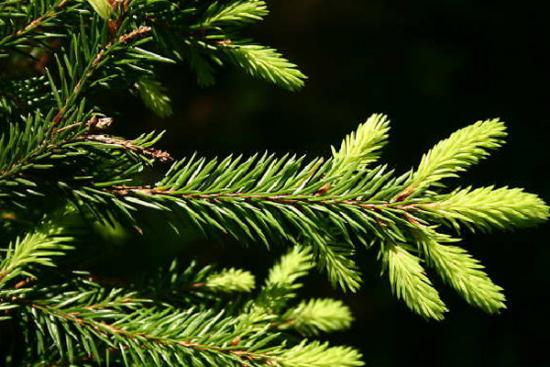
To successfully grow spruce, it is important to remember that adult plants are quite light-loving, and it is sometimes better to artificially cover young plants from direct hot sun.
There are no special requirements for the composition of the soil for planting Christmas trees. Slightly acidic or neutral soil, light, loamy or sandy loam, is desirable. Close proximity to groundwater is not desirable. Spruce does not like dense, compacted soil, so you need to avoid places where people and animals pass by in large numbers.
Having chosen a place, you need to prepare a planting hole, the size of which depends on the size of the root system and is two to three times larger than it.
Be sure to add to the bottom of the hole:
- drainage (pebbles, expanded clay)
- nutrient mixture (humus, peat)
- black soil
- sand
Before planting, water the container or root ball well. Carefully place the seedling in the hole.Important! The root collar should be at soil level.
Covering the roots with soil, lightly compact each layer. If you got it bare-rooted seedling, this can significantly reduce the survival rate of the plant, try to soak the roots for five to six hours in a solution of heteroaxin (root) - this will restore the water balance of the plant and improve further root formation. After planting, water thoroughly. If necessary, create artificial sun protection. When planting in spring and early summer, mineral fertilizers are not applied. These plantings need to be fertilized only for next spring.
If Christmas trees are planted in the fall, then mineral fertilizers must be applied. Both specialized mixtures for conifers and phosphorus and potassium fertilizers are suitable.
All spruces are responsive to watering and do not tolerate prolonged drought. In dry and hot weather, you need to spill at least a bucket of water under each plant.
It is necessary to remove weeds from the root zone of young trees, loosen the soil, and mulch after watering.
If necessary, sanitary pruning of dry and damaged branches is carried out. If the diameter of the removed branch is more than 1 cm, then the cut site is treated with garden varnish; if it is more than 5 cm, then it is advisable to wrap it with dark film.
Diseases and pests
The absence of succulent leaves does not reduce the attractiveness of the Christmas tree to all kinds of pests.
Particularly dangerous are:
- aphid
- scale insects
- spider mites
- hermes
- sawyers
- cone moths
- bark beetles
When you first detect aphids, try to wash them off the tree bark with a soap solution at intervals of 7-8 days. It is better to cut off the ends of young growths, which are massively populated by aphids, together with the insects.
If light “cones” - galls - are found on the plant, then it is threatened by spruce hermes. All shoots that have galls will have to be cut off, otherwise the entire branch will dry out next year. Treat with any insecticidal preparation.
Timely spraying with insecticides will protect plantings from many other pests.
Try to closely monitor the health of the Christmas trees and at the first sign, which is drying out and shedding of needles, take measures to treat the plant. It is very difficult to tell everything about spruce in one article, but following the above rules will help you grow an elegant and healthy tree.
A specialist will tell you how to grow a spruce yourself in the video:
Interesting information about the vegetable garden


